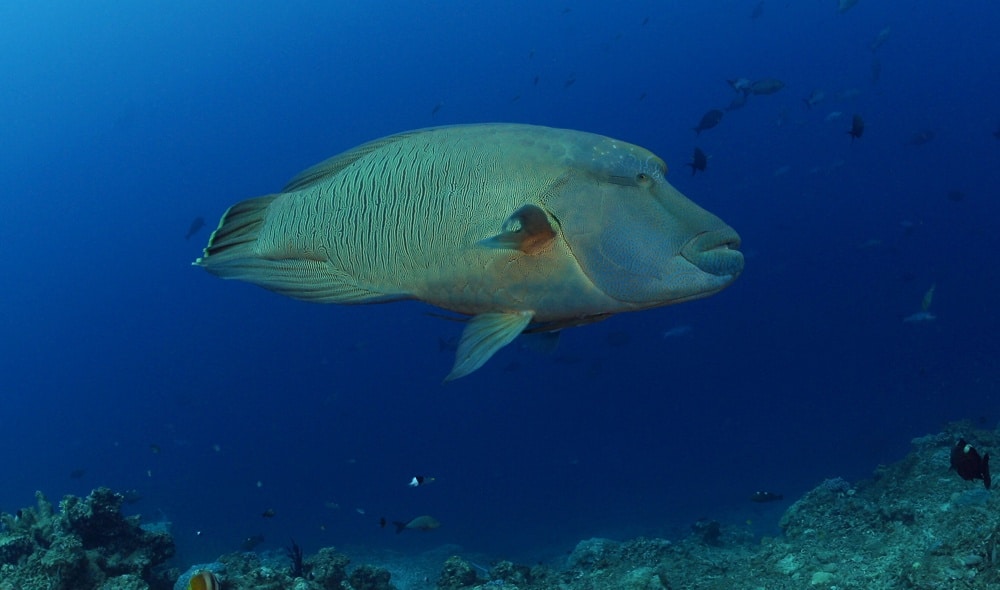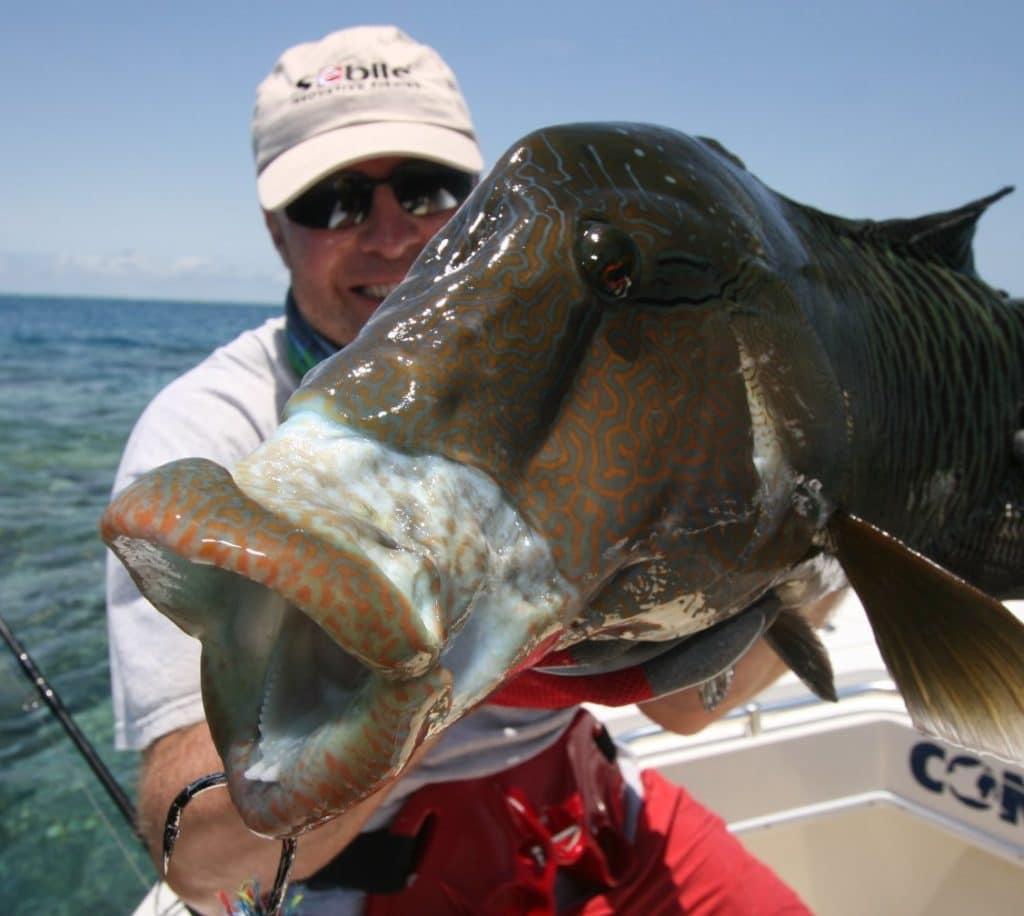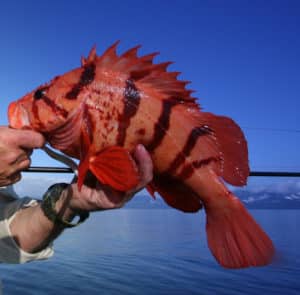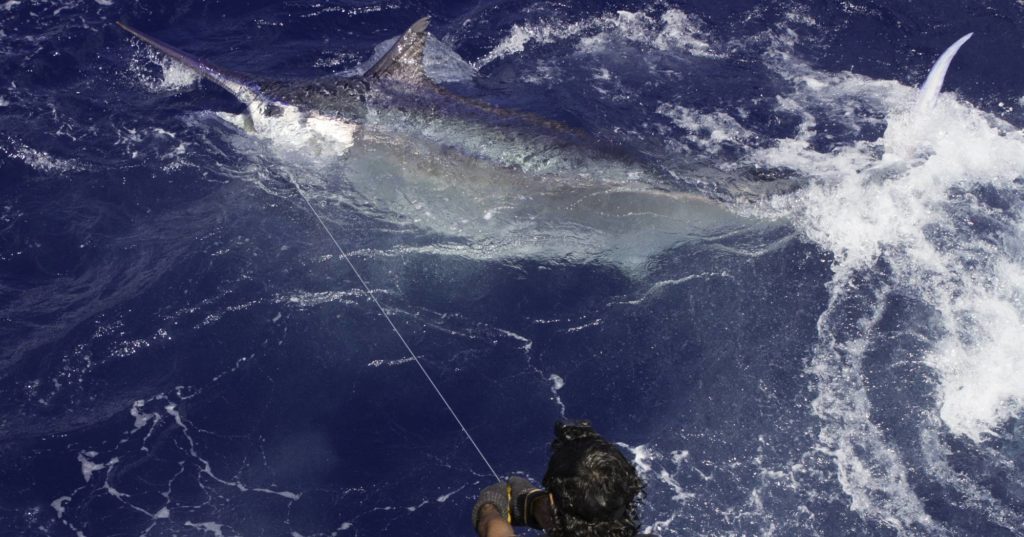
Fishing for Monster Marlin
Both of the largest species —blue marlin and black marlin — grow to nearly 1,500 pounds or more. IGFA world records: 1,402 pounds for blue marlin in the Atlantic (Brazil, 1992), and for black marlin, 1,560 pounds (Peru, 1953).
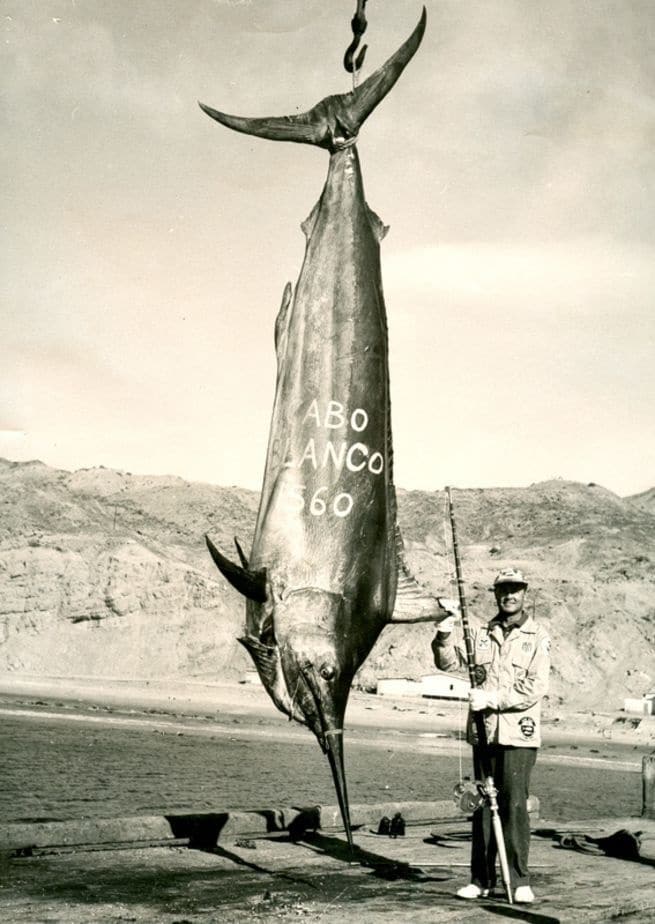
(Learn more about “The Greatest Big-Game Fishing the World Has Ever Known.”) Courtesy International Game Fish Association
It’s hard to top either the availability of gargantuan blacks off northeastern Australia or the infrastructure in Cairns to get to ‘em. Best shots will come in October through December. If you’re an Atlantic-kind-of person, consider Bermuda, Madeira or Ascension Island.
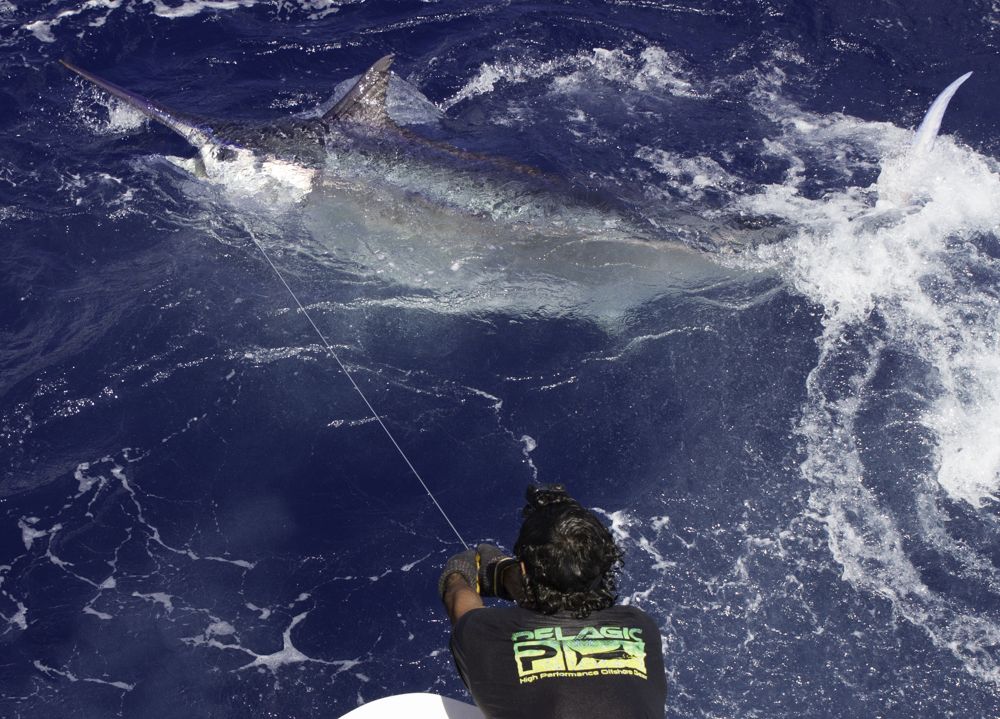
Fishing for Monster Bluefin Tuna
Another species that can certainly exceed 1,500 pounds. The IGFA world record caught in 1979 weighed in at 1,496 pounds. Granders (of 1,000 pounds or more) are caught annually.
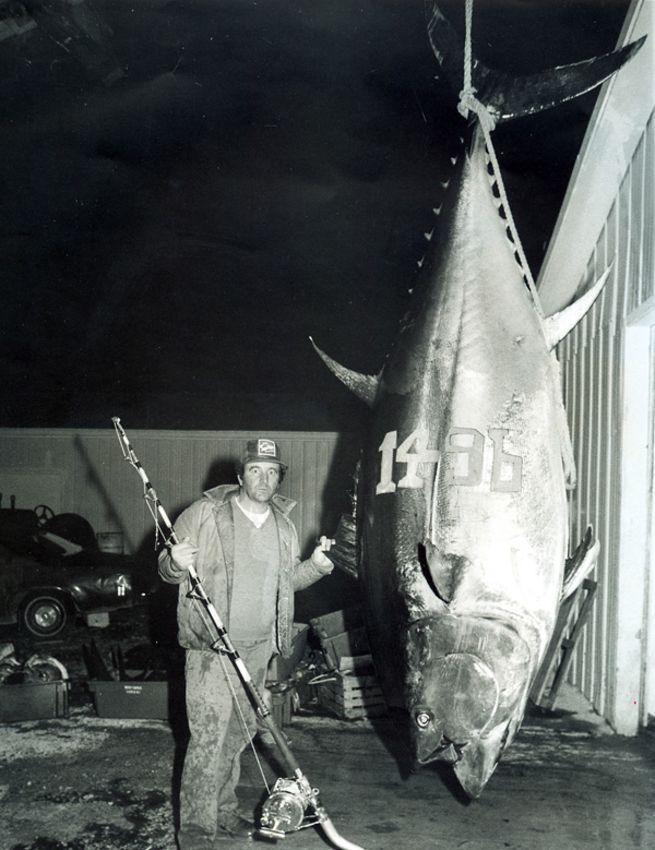
Not many choices here for anglers after the world’s biggest tuna: Head for the Canadian Maritimes (Nova Scotia or Prince Edward Island) in late summer/fall. But book trips early; there’s lots of interest in this ultimate tuna fishery.
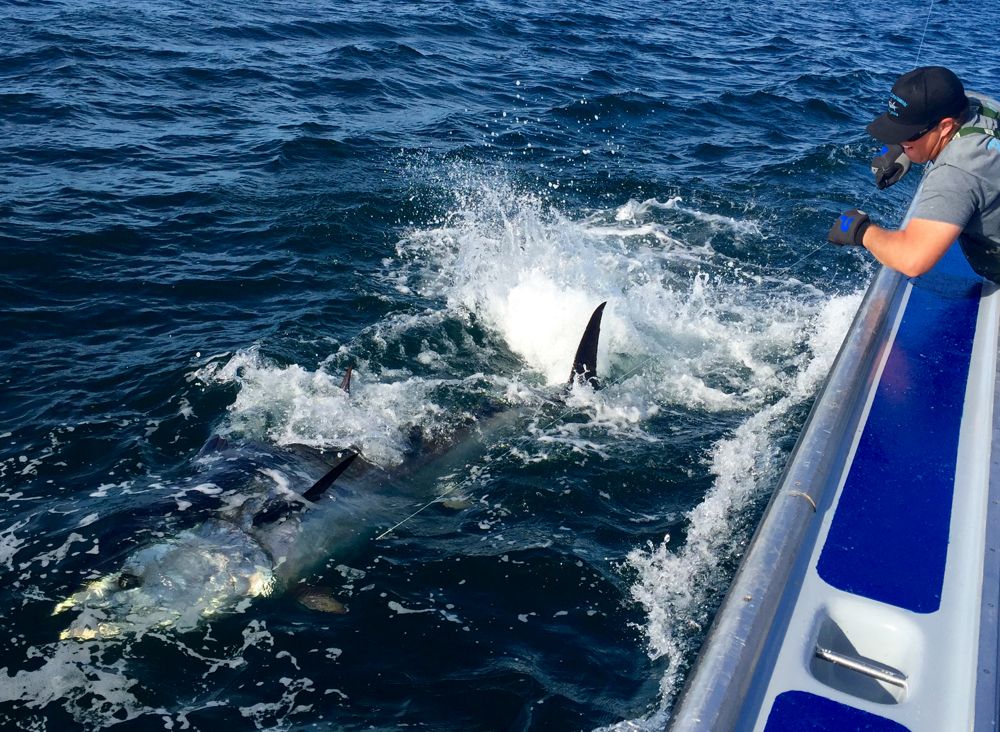
Fishing for Monster Tarpon
Tarpon likely grow to 300 pounds — a bit larger than the IGFA world record of 286 pounds, 9 ounces, caught in Guinea-Bissau in 2003.
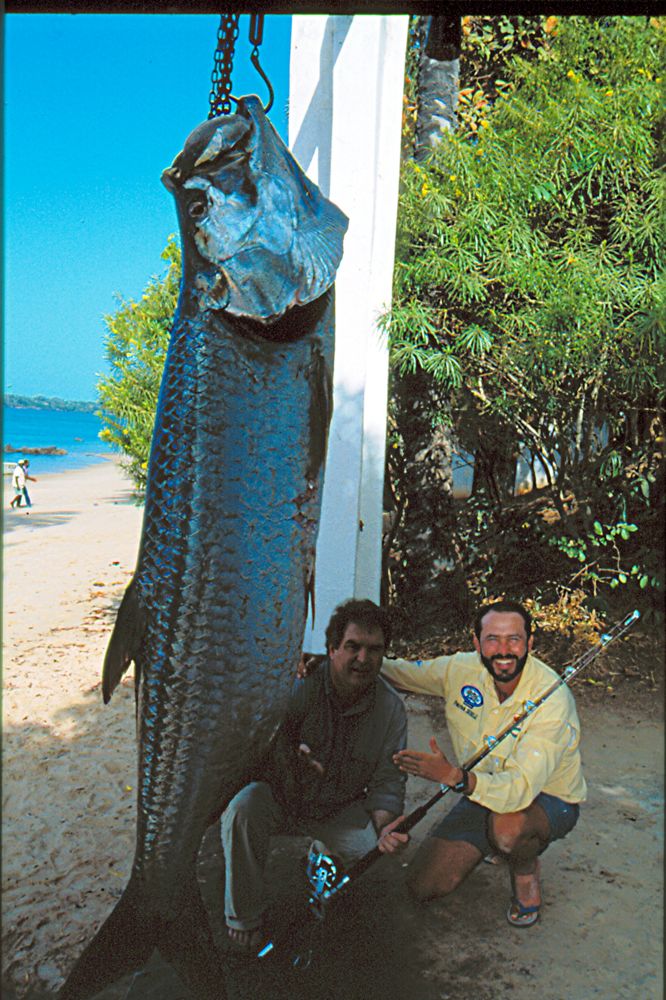
Head for Guinea-Bissau, Gabon or Sierra Leone’s Sherbro Island, on the west coast of Africa. The west coast of Florida and the Keys also produce tarpon in excess of 200 pounds.
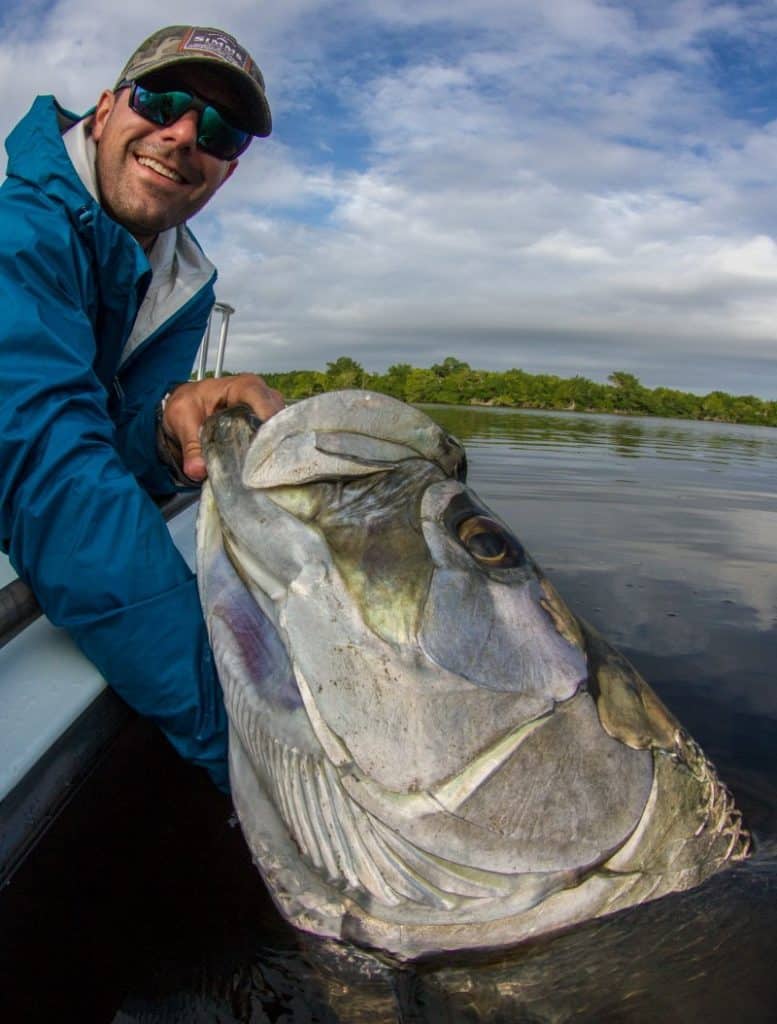
Fishing for Monster Dogtooth Tuna
Chances are dogtooth tuna easily over the 250 mark swim many waters; the largest caught so far per the IGFA all-tackle record weighed 236 pounds, 15 ounces, from Tanzania in 2015.
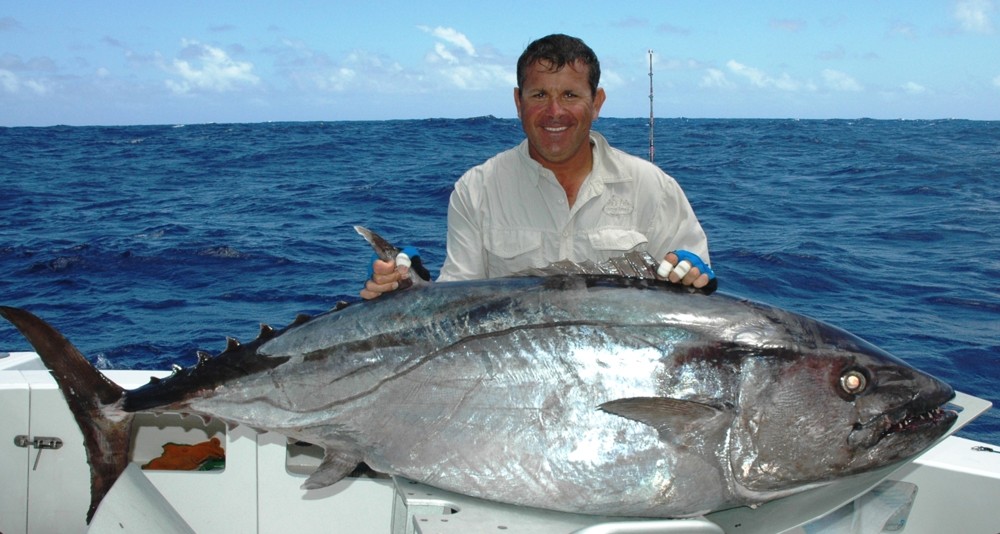
To catch your monster doggie, head for the tropical Indian or western Pacific Ocean. While big doggies show up in many areas, the line-class records are dominated by one country: Tanzania.
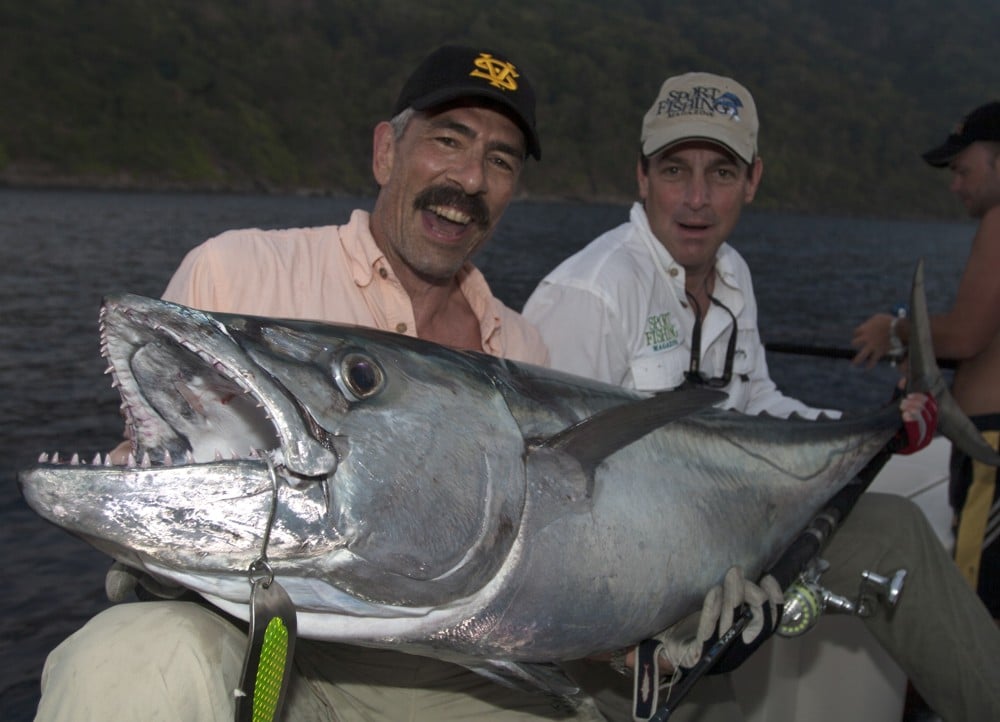
Fishing for Monster Swordfish
For decades, a swordfish more than 1,000 pounds has been an unreachable holy grail to serious broadbill anglers, but the fact remains that we know they can grow even larger: The IGFA all-tackle record of 1,182 pounds has remained in place since it was caught in 1953 off Chile.
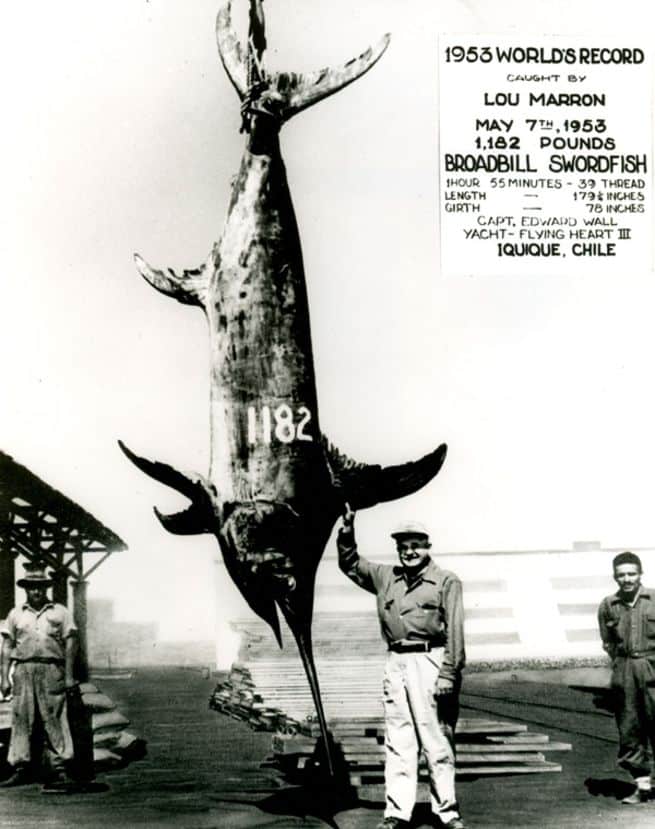
In recent years, all signs for monster swords point to northern New Zealand, where line-class-record fish in the 800- to 900-pound range have been caught. (And keep an eye on a burgeoning daytime sword fishery off southwestern Australia from Tasmania to Sydney producing trophy fish.)
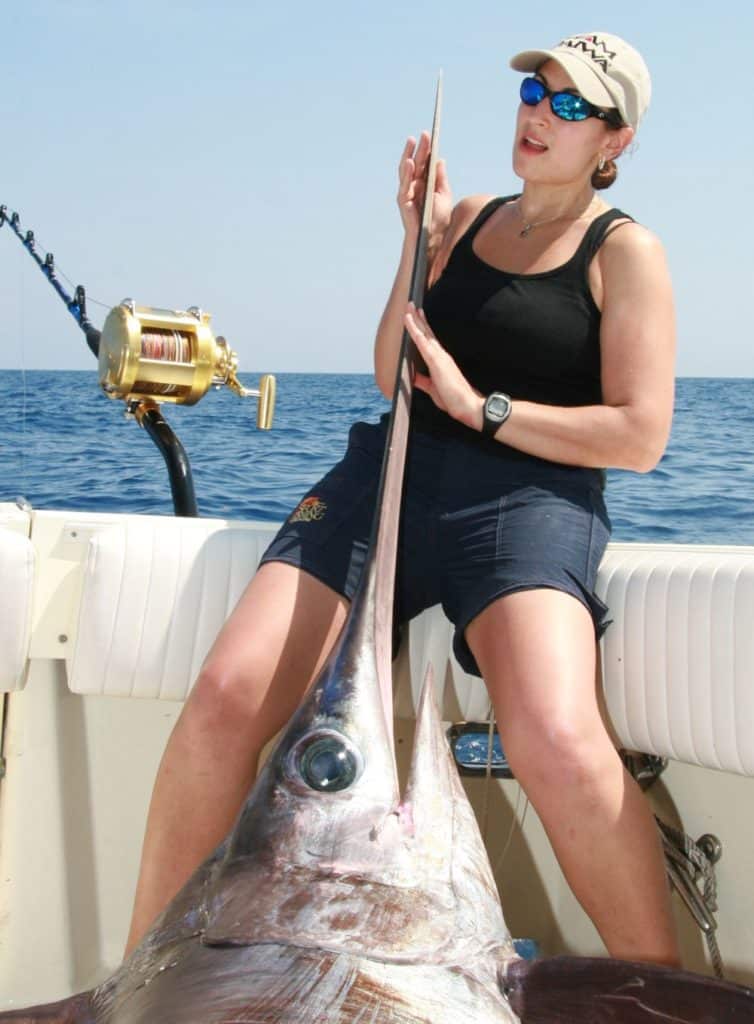
Fishing for Monster Giant Trevally
For its take-no-prisoners fight when hooked, anglers have likened this species to the junkyard dog of reefs throughout the far Pacific and Indian Ocean, the GT grows to at least 160 pounds, witness the IGFA all-tackle record of 160 pounds, 7 ounces, from Japan in 2006.
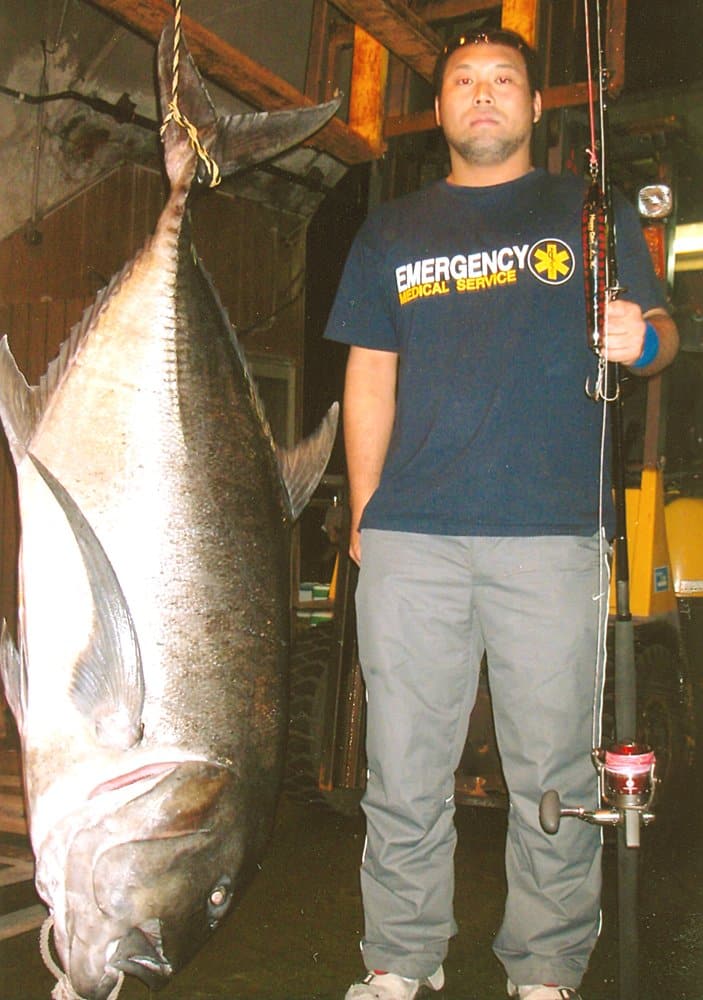
When it comes to GT, monsters can lurk pretty much throughout their range. That said, considering the handful of line-class records well over 100 pounds, Japan, Hawaii (Kona) and southeast Africa are good bets, and many gargantuan GT have been released by anglers fishing the waters of southern Oman. Anyone embarking on a quest for monster trevally had better be in excellent shape.
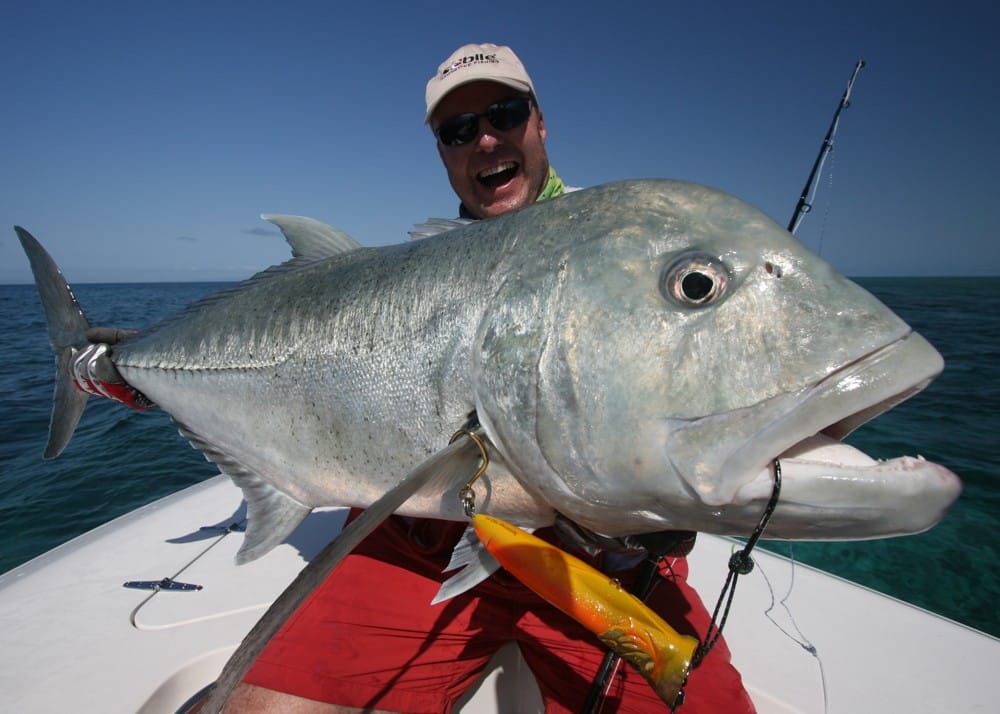
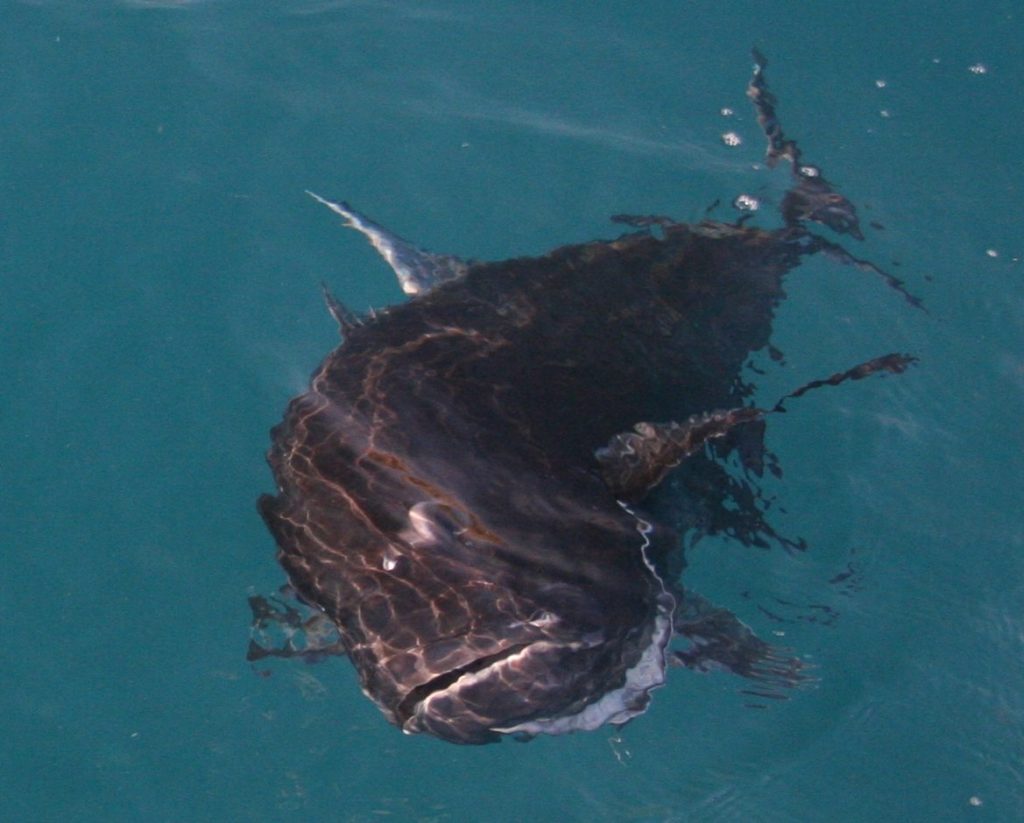
Fishing for Monster Mako Sharks
While the size of a maximum mako is highly speculative, odds are that makos more than 1,500 pounds are out there somewhere. In any case, the IGFA all-tackle record stands at 1,221 pounds taken off Massachusetts in 2001.
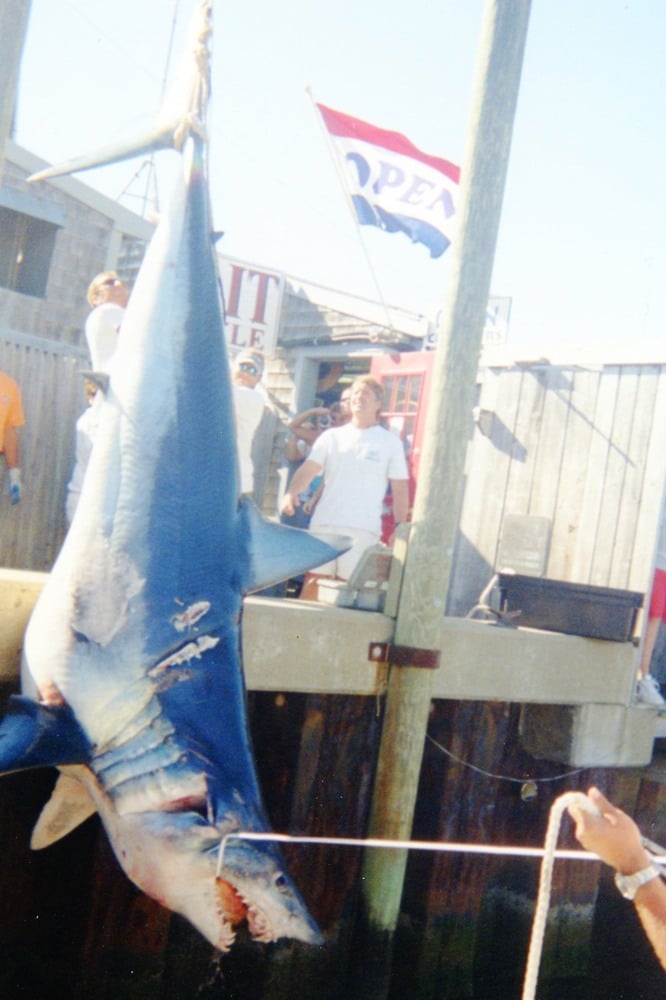
The U.S. Northeast has produced some monsters, but trophy makos patrol all temperate/warm oceans, from southern Australia to Spain.
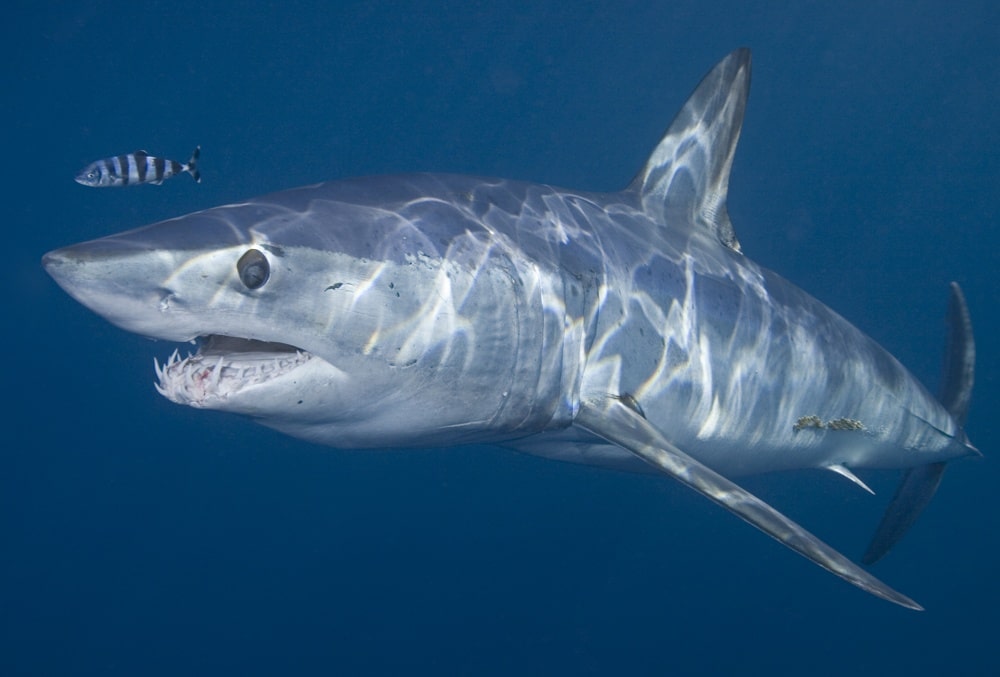
Fishing for Monster Yellowfin Tuna
Setting your sights on a yellowfin well over 300 pounds is by no means unreasonable; we know that yellowfin exceed 400 pounds. The IGFA all-tackle record, caught off Cabo in 2012, weighed 427 pounds.
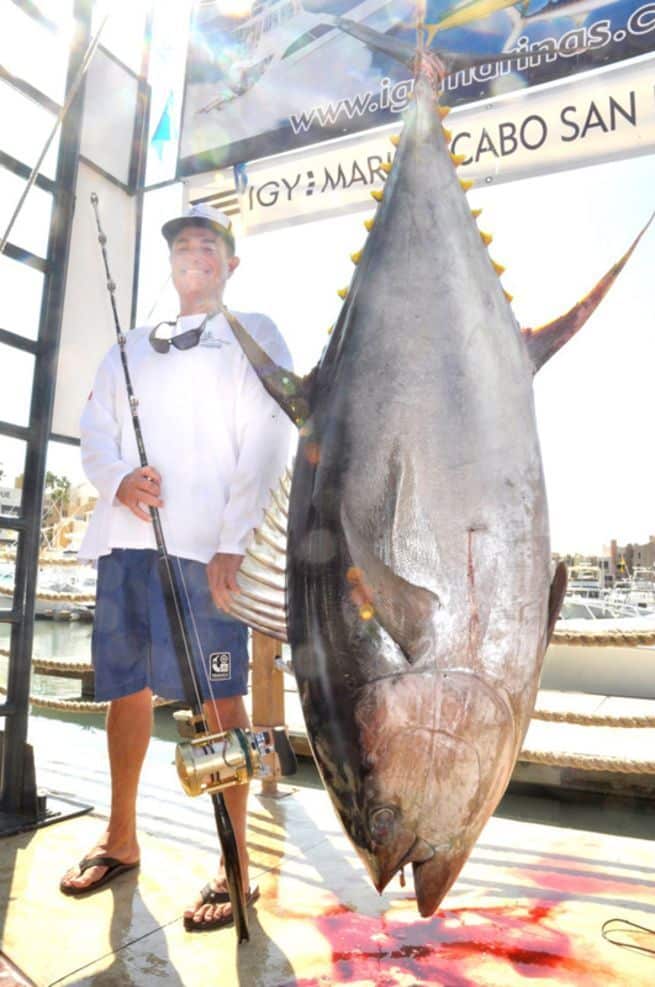
While Hawaii gives up yellowfin well over 200 pounds every year, and the Gulf of Guinea off west-central Africa years ago produced some tuna over 300, for the biggest yellowfin in the world, your best chances are in the Eastern Pacific, particularly off Baja and the Mexican mainland.
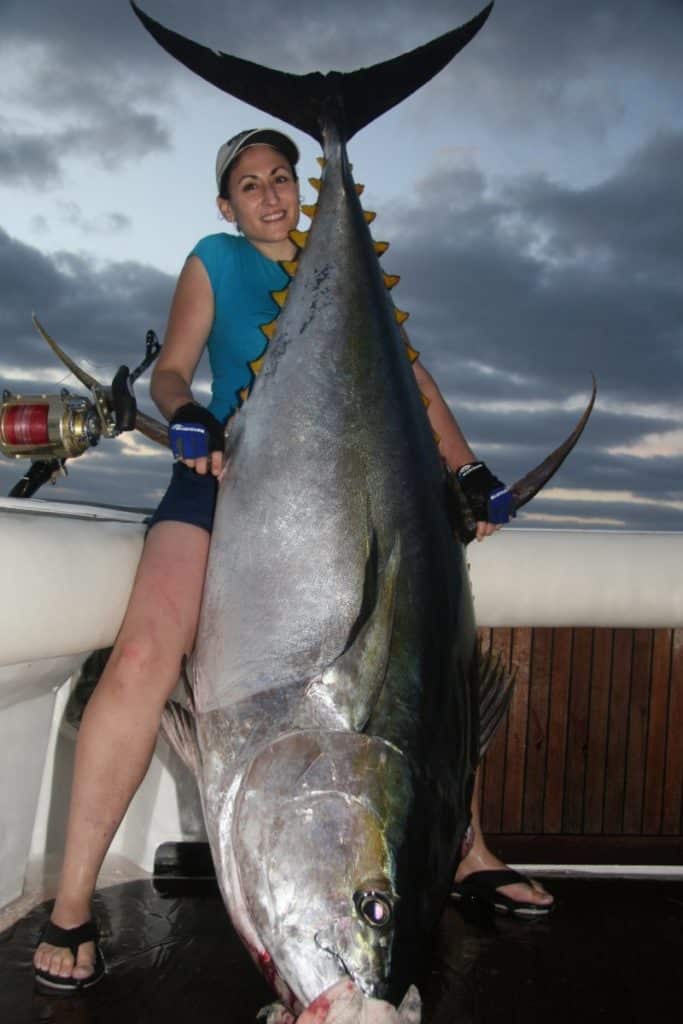
Fishing for Monster Humphead Maori Wrasse
These magnificent, freight-train-powerful reef dwellers, largest of wrasses, reportedly reach around 400 pounds. Perhaps because they’re widely protected and usually released, the world record has stood at a mere 43 pound, 10 ounces, since 1997. Anglers regularly hook — and often lose — far larger fish.
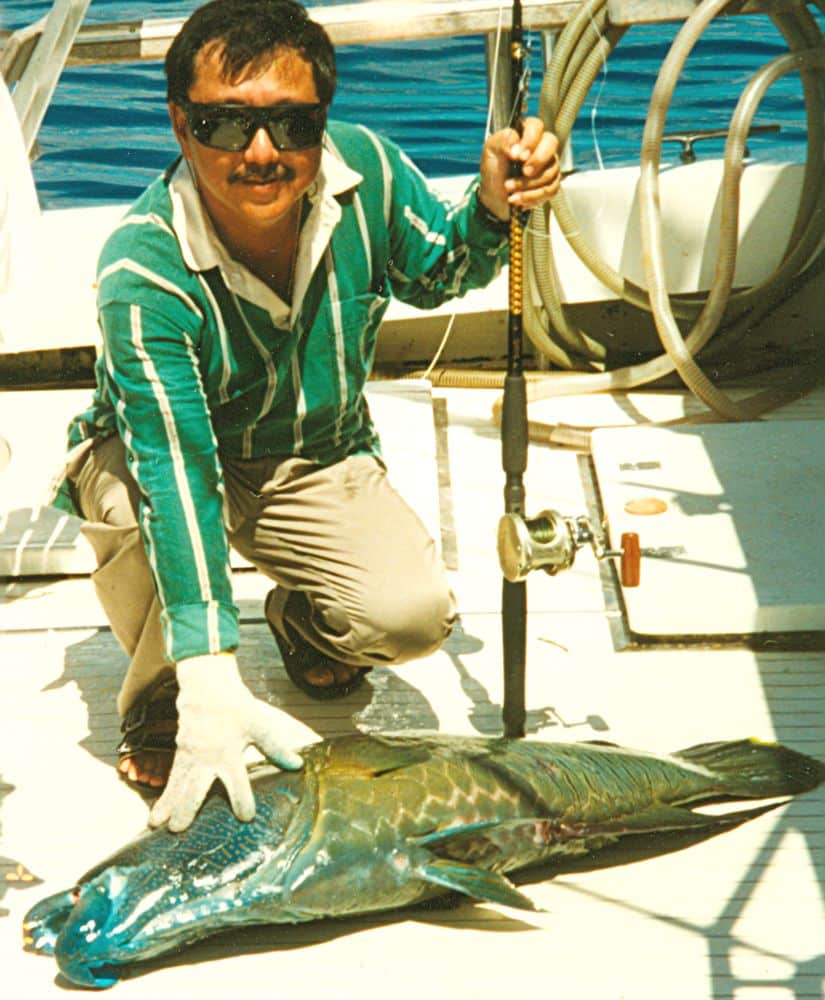
Maori wrasse can be caught in large reef areas throughout the Indo-Pacific; big wrasse challenge anglers regularly around the Great Barrier Reef and Papua New Guinea, where large poppers attract their interest. At that point, stopping a monster wrasse can be just this side of impossible.
